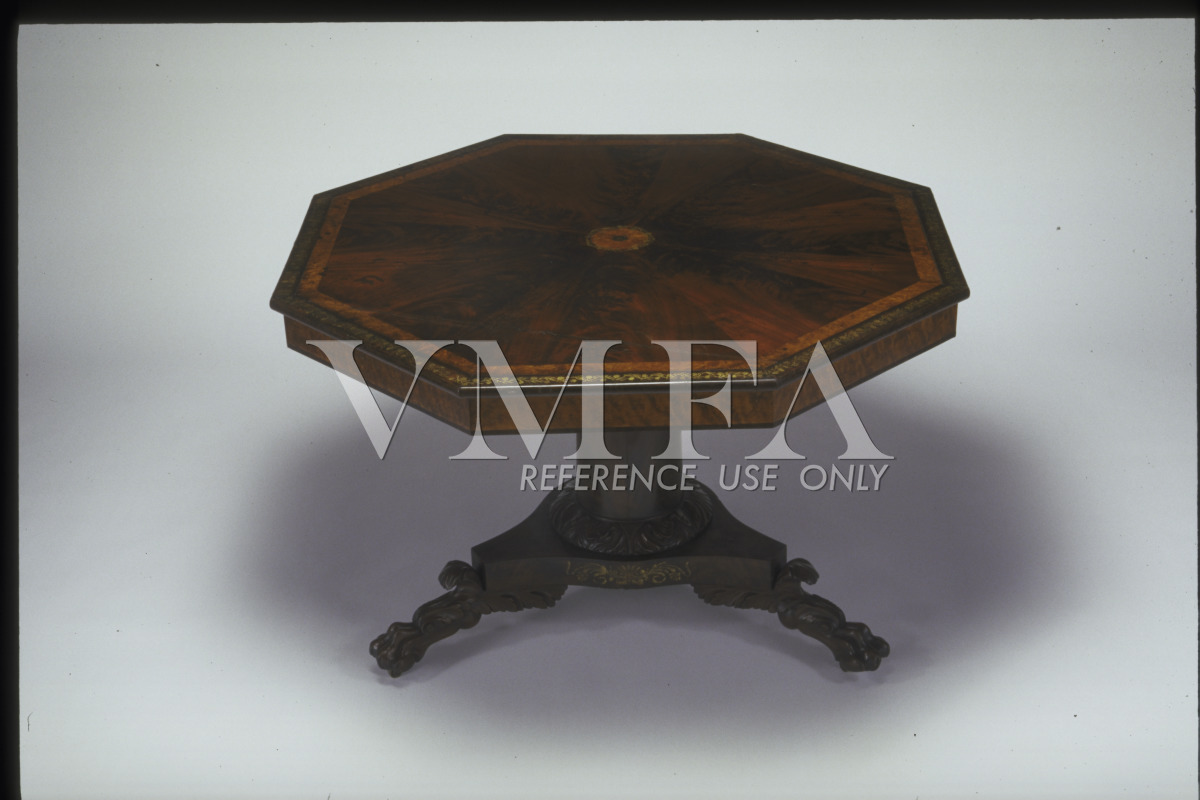
Table (Primary Title)
Tilt-top table (Alternate Title)
Charles Koones, American, 1791 - 1857 (Artist)
This tilt-top center table was called a “loo” table after the fashionable French card game lanterloo. The octagonal surface allowed eight players to engage in “trumping” their opponents during an evening’s gathering. Such modish entertainments fueled the demand for new furniture forms throughout America. In 1829, the leading Philadelphia shop of French-born cabinetmaker Anthony Quervelle was commissioned to produce three similar tables for Andrew Jackson’s White House.
Although based on English “pillar and claw” prototypes, the table’s execution is indebted to the influence of Quervalle and other Philadelphia cabinetmakers. The combination of sweeping acanthus leaves arching back over the forelegs and foliate scrolls extending beneath the boxed platform is a design choice common to the area. Its appearance in Alexandria reflects the burgeoning regional opportunities of the Potomac River port city. Linked by canals and roadways to regions farther south and west, the town attracted carpenters, cabinetmakers, and other specialists from Philadelphia and elsewhere. These artisans brought with them the tastes and techniques of their earlier training and experience.
Some object records are not complete and do not reflect VMFA's full and current knowledge. VMFA makes routine updates as records are reviewed and enhanced.

